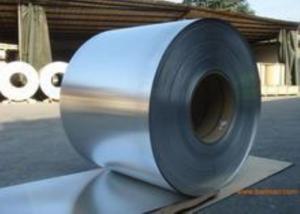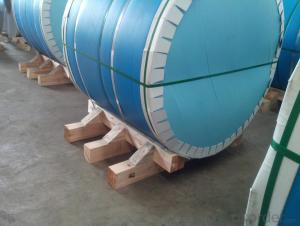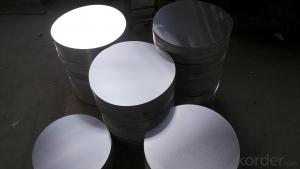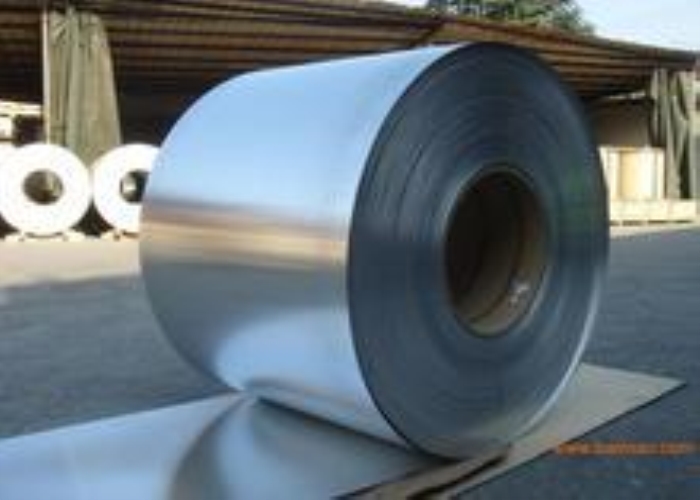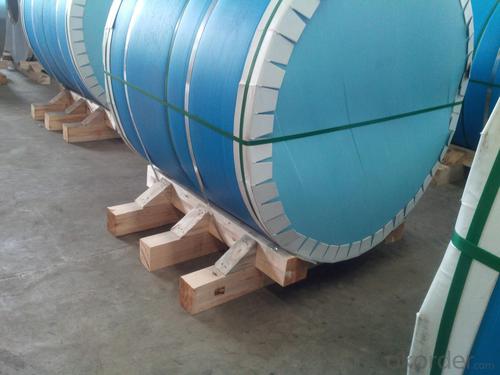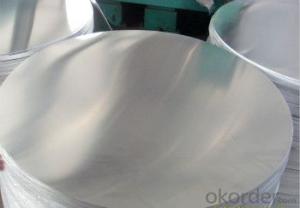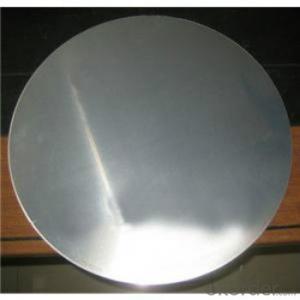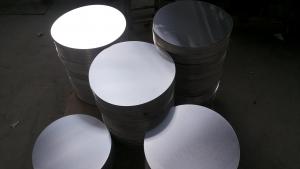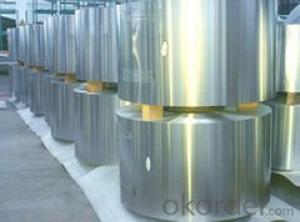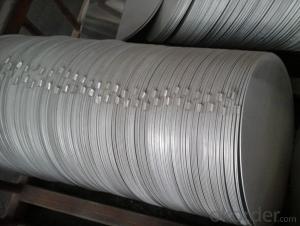Lennox All Aluminum Coils for Spinning Circle with Pan
- Loading Port:
- Shanghai
- Payment Terms:
- TT OR LC
- Min Order Qty:
- 5 m.t.
- Supply Capability:
- 50000 m.t./month
OKorder Service Pledge
OKorder Financial Service
You Might Also Like
Specification
1.Structure of Aluminium Coils for Spinning Circle with Pan
Aluminium Coils for Spinning Circle with Pan is one semi-finished aluminium material. This strip can be rolled down to aluminium coil,sheet,circle ect. The alloy AA1050 is widly used in building, industry ect. Its weight is much lower than steel. So many customers choosed aluminium material instead of steel.
2. Main features of Aluminium Coils for Spinning Circle with Pan
a.Competitive price---We have our own mills and can produce mill finished aluminium coils, so we can control the production cost better.
b.Professional after-sale service---We have more than 15 years exportation experience and you need not worry about the exporation problems.
c.Fast delivery time---We can control the delivery time within 35 days.
3. Image
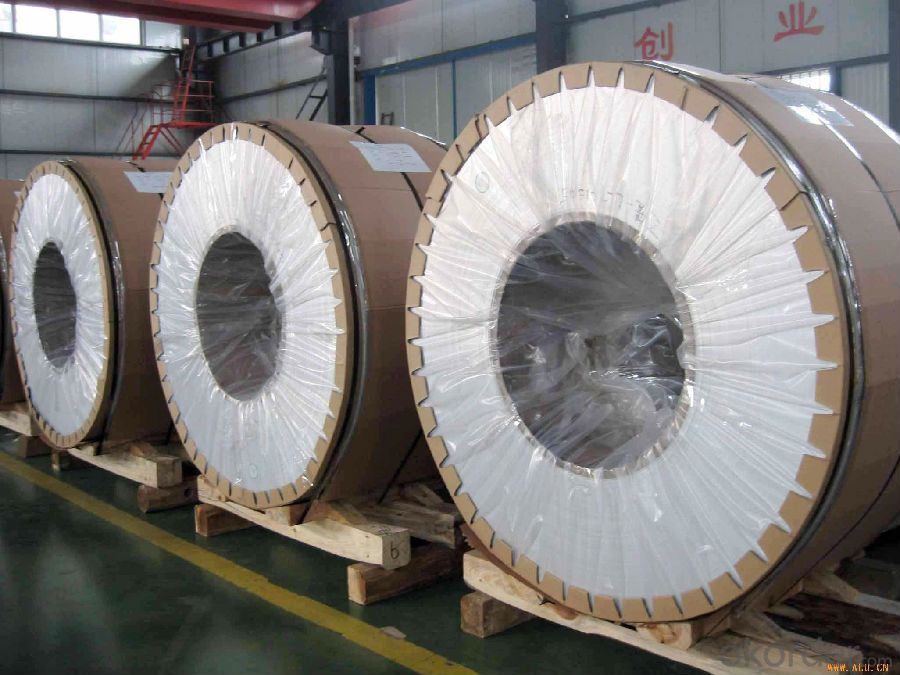
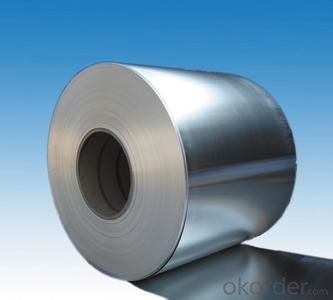
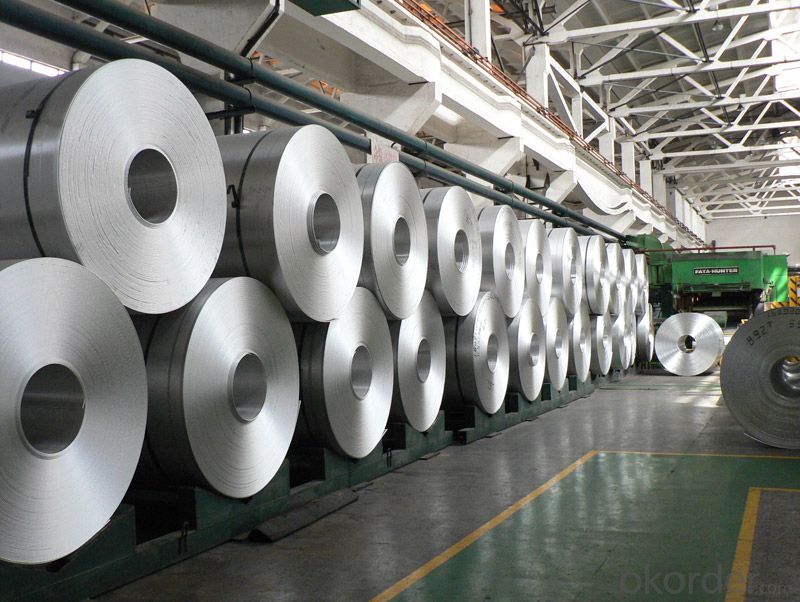
4. Product Specification
| ALLOY | TEMPER | WIDTH | THICKNESS | TIME |
| AA3003 | H18 | 1000MM-1500MM | 0.2MM-3MM | 25-30 DAYS |
5.FAQ:
What is the quality standard?
---Usually our standard is GB3880-2006
What is the largest width?
---It is 2300mm
What is the MOQ?
---Usually we can accept 80 tons.
- Q: This question asks about the environmental friendliness of aluminum coils.
- <p>Aluminum coils are considered environmentally friendly for several reasons. They are highly recyclable, with the recycling process requiring significantly less energy compared to producing new aluminum. This reduces greenhouse gas emissions and conserves resources. Additionally, aluminum is a non-toxic material that does not leach harmful substances into the environment. However, the environmental impact also depends on the production process, which can consume energy and generate emissions. Overall, when properly recycled, aluminum coils have a lower environmental footprint than many other materials.</p>
- Q: What’s the standard of tensile strength and ductility of aluminum coil 3003?
- Detailed description can help resolve problems quickly. Performance and status is a related. As aluminum coil is usually semi-hard, the tensile strength is greater than or equals 150, ductility is greater than or equals 12.
- Q: What are the different coil cutting options for aluminum coils?
- Aluminum coils have various options for cutting, depending on the project's specific needs. Some common choices include: 1. Shearing involves using a shear blade to cut straight through aluminum coils. This method is ideal for thinner gauges of aluminum. 2. Slitting cuts aluminum coils into narrower strips by passing them through rotating circular blades. It is commonly used in industries like roofing, automotive, and packaging. 3. Cut-to-Length is a method where aluminum coils are cut into individual sheets of desired lengths. The process involves uncoiling, leveling, and cutting with a flying or stationary shear. This option is suitable for applications requiring precise sheet lengths. 4. Laser Cutting utilizes a high-powered laser beam to melt and vaporize the metal, resulting in clean and precise cuts. It is often used in aerospace and electronics industries for cutting complex shapes and patterns. 5. Waterjet Cutting involves using a high-pressure jet of water mixed with an abrasive material to cut through the coils. It is particularly effective for thicker gauges of aluminum without heat-affected zones or material distortion. These options provide different ways to cut aluminum coils. The choice of method depends on factors such as the desired end product, required precision, material thickness, and production volume. Considering the project's specific requirements is crucial in selecting the most appropriate cutting option.
- Q: What are the different coil transportation options for aluminum coils?
- There are several different coil transportation options available for aluminum coils. 1. Flatbed Trucks: Flatbed trucks are commonly used for transporting aluminum coils. These trucks have an open top and are equipped with a flat, open trailer bed. The coils are securely strapped or banded onto the bed to prevent any movement during transportation. 2. Coil Racks: Coil racks are specialized transportation equipment designed specifically for carrying aluminum coils. These racks are usually made of steel and are placed inside a truck or trailer. The coils are stacked on the racks, which have dividers to keep them in place and prevent any shifting or damage. 3. Coil Trailers: Coil trailers are trailers that are specifically designed for transporting aluminum coils. These trailers have a unique coil cradle system that securely holds the coils in place during transportation. The cradles are adjustable to accommodate different coil sizes and prevent any movement or damage. 4. Container Shipping: Aluminum coils can also be transported using shipping containers. The coils are loaded into the containers and secured using straps or bracing. This option is commonly used for international transportation, as containers can be easily loaded onto ships or trains. 5. Rail Transport: Rail transport is another option for transporting aluminum coils. Specialized rail cars, known as coil cars, are used for this purpose. These cars have cradles or racks built into them to securely hold the coils during transit. Rail transport is often used for long-distance transportation, as it is a cost-effective and efficient method. Overall, the choice of coil transportation option depends on factors such as distance, cost, and the specific requirements of the coils being transported.
- Q: How do aluminum coils contribute to the aesthetics of a building?
- The versatility, durability, and aesthetic appeal of aluminum coils significantly enhance the aesthetics of a building. Firstly, aluminum coils offer flexibility in achieving the desired aesthetic by easily shaping and forming them into various architectural designs. Whether it's a sleek modern look or a more traditional design, aluminum coils can be customized to meet specific aesthetic requirements. Additionally, architects and designers have a diverse palette of colors and finishes to choose from when using aluminum coils. This wide range of options allows for endless possibilities in creating visually appealing facades and exteriors that match the overall theme or style of the building. Moreover, aluminum's durability and resistance to corrosion make it an ideal material for architectural applications. By using aluminum coils, the exterior surfaces of a building can maintain their aesthetic appeal for an extended period with minimal maintenance required. This long-lasting beauty makes aluminum coils a cost-effective choice for maintaining the aesthetics of a building. Furthermore, aluminum coils contribute to the energy efficiency of a building. They have excellent thermal conductivity, which effectively dissipates heat and reduces energy consumption for temperature control. This energy-saving feature not only enhances the sustainability of a building but also adds to its overall aesthetic appeal by incorporating environmentally conscious design elements. In conclusion, the use of aluminum coils in a building contributes to its aesthetics through design flexibility, a wide range of color and finish options, durability, and energy efficiency. These qualities allow architects and designers to create visually appealing structures that align with the desired aesthetic vision while ensuring long-lasting beauty and sustainability.
- Q: Can aluminum coils be used in vacuum applications?
- Yes, aluminum coils can be used in vacuum applications. Aluminum is a common choice for vacuum systems due to its low outgassing properties, high thermal conductivity, and resistance to corrosion. It is suitable for various vacuum applications such as cooling, heating, and heat transfer.
- Q: How do you clean and maintain aluminum coils?
- Achieving clean and well-maintained aluminum coils can be accomplished by following a few straightforward steps. Initially, gather the necessary materials such as a soft brush or vacuum cleaner, a mild detergent or coil cleaner, a water hose, and a spray bottle. Commence by deactivating the power supply to the unit and ensuring that it is safe to proceed. Subsequently, employ a soft brush or a vacuum cleaner with a brush attachment to eliminate any debris or loose dirt from the coils. It is crucial to exercise gentleness to prevent harm to the delicate fins of the coils. Upon removal of loose dirt, combine a solution of mild detergent or coil cleaner with water within a spray bottle. Thoroughly spray the solution onto the coils, making certain that it covers the entire surface. Allow the solution to sit for a few minutes to enable it to penetrate the dirt and grime. Once the solution has had sufficient time to work, delicately scrub the coils using a soft brush or a soft cloth. Caution must be exercised to avoid applying excessive pressure or utilizing abrasive materials, as this could result in damage. Particular attention should be given to areas with obstinate dirt or buildup. Following a thorough cleaning of the coils, rinse them off with a water hose. It is crucial to ensure that all the detergent or coil cleaner is completely washed away. It is recommended to direct the water flow in the opposite direction of the air flow in order to prevent the pushing of debris further into the coils. Subsequent to rinsing, allow the coils to completely dry before reactivating the power supply. This will prevent potential electrical hazards. The utilization of a fan or the natural air drying process can be employed. To uphold the cleanliness of the coils, it is advisable to clean them at least once a year or more frequently if the unit is exposed to heavy dirt or debris. Regular inspection of the coils for dirt buildup and prompt cleaning will aid in maintaining efficiency and prolonging the lifespan of the aluminum coils.
- Q: How are aluminum coils annealed?
- Aluminum coils are typically annealed through a process known as heat treatment. This involves heating the coils to a specific temperature and then slowly cooling them down. The purpose of annealing is to soften the aluminum and improve its ductility, making it easier to work with. The first step in annealing aluminum coils is to clean them thoroughly to remove any contaminants. The coils are then placed in a furnace, which is heated to the desired temperature. The temperature and duration of the annealing process depend on the specific grade and thickness of the aluminum being treated. Once the coils reach the desired temperature, they are held at that temperature for a predetermined amount of time. This allows for the internal structure of the aluminum to become more uniform and relieves any internal stresses that may have developed during the manufacturing process. After the annealing process is complete, the coils are slowly cooled down in the furnace. This slow cooling is important to prevent the formation of any new internal stresses. Once the coils have cooled to room temperature, they are ready for further processing or use. In some cases, a process known as quenching may be used after annealing. Quenching involves rapidly cooling the aluminum by immersing it in a quenching medium, such as water or oil. This can help to further improve the mechanical properties of the aluminum, such as its strength and hardness. Overall, the annealing process for aluminum coils is a carefully controlled heat treatment that aims to improve the metal's properties and make it more suitable for various applications.
- Q: What is the typical conductivity of aluminum coils?
- The typical conductivity of aluminum coils is high, ranging from approximately 35 to 40 million Siemens per meter (MS/m).
- Q: Can aluminum coils be used in food storage facilities?
- Yes, aluminum coils can be used in food storage facilities. Aluminum is a safe and commonly used material for food storage due to its non-reactive properties and resistance to corrosion, making it suitable for maintaining food quality and preventing contamination.
Send your message to us
Lennox All Aluminum Coils for Spinning Circle with Pan
- Loading Port:
- Shanghai
- Payment Terms:
- TT OR LC
- Min Order Qty:
- 5 m.t.
- Supply Capability:
- 50000 m.t./month
OKorder Service Pledge
OKorder Financial Service
Similar products
Hot products
Hot Searches
Related keywords
